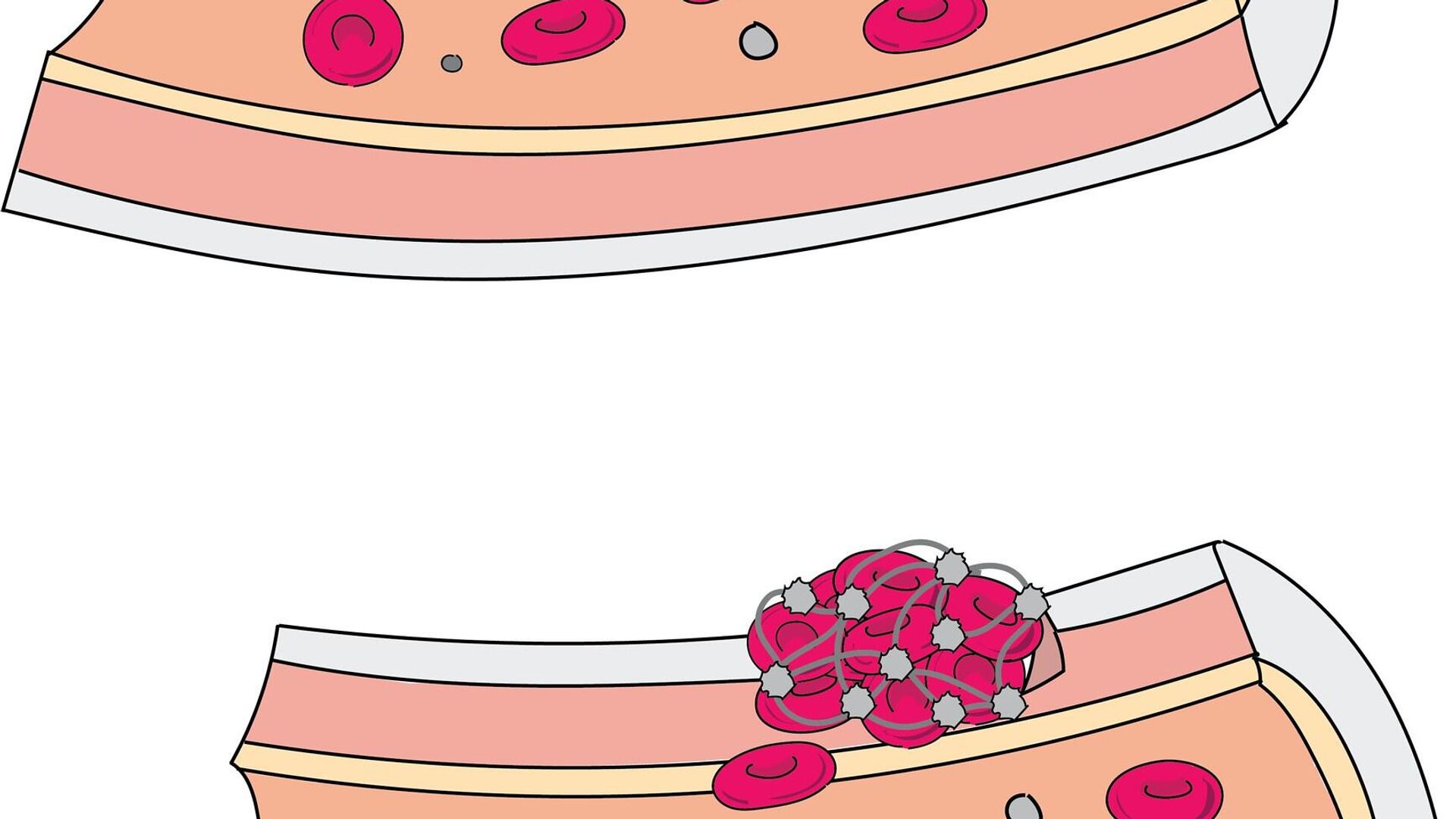https://sputnikglobe.com/20230126/scientists-want-to-use-ultrasonic-vortex-to-break-blood-clots-1106725557.html
Scientists Want to Use Ultrasonic Vortex to Break Blood Clots
Scientists Want to Use Ultrasonic Vortex to Break Blood Clots
Sputnik International
Every year, ruptured blood clots cause a large number of deaths. However, scientists have proposed a new ultrasonic technology that, if successful, could greatly simplify the recovery process.
2023-01-26T13:55+0000
2023-01-26T13:55+0000
2023-01-26T13:55+0000
science & tech
research
ultrasound
https://cdn1.img.sputnikglobe.com/img/07e7/01/1a/1106719257_0:535:1737:1512_1920x0_80_0_0_13874fe14de3e44d1e8950b2bc5c0683.jpg
An international team of researchers has introduced ultrasound technology to quickly break up blood trombuses. Ultrasonic waves swirl as they move forward and, due to the vortex activity, effectively deal with the obstacle in their path.Scientists note that existing methods are largely based on thrombus dissolution. This is a long process - for example, for cerebral venous sinus thrombosis, it takes about 29 hours and is ineffective in 20-40% of cases. The new technology handles this type of thrombosis in less than 30 minutes.In addition to the speed benefits, which reduce the risks of irreversible complications and disability, vortex ultrasound is also safer. In experiments on animal models, it has been shown that the treatment does not damage blood vessel walls and does not cause significant damage to red blood cells.Preclinical studies are ongoing at the moment. Scientists are hoping for successful results that will allow them to evaluate the method's potential for humans in the future."The next step is for us to perform tests using an animal model to better establish the viability of this technique for CVST treatment," Jiang says. "If those tests are successful, we hope to pursue clinical trials."
Sputnik International
feedback@sputniknews.com
+74956456601
MIA „Rosiya Segodnya“
2023
News
en_EN
Sputnik International
feedback@sputniknews.com
+74956456601
MIA „Rosiya Segodnya“
Sputnik International
feedback@sputniknews.com
+74956456601
MIA „Rosiya Segodnya“
new ways to deal with blood clots, using ultrasonic sound to break thrombuses, new medicine researches in 2023, how to treat blood clots, how to cure thrombosis, how many blood clot cases
new ways to deal with blood clots, using ultrasonic sound to break thrombuses, new medicine researches in 2023, how to treat blood clots, how to cure thrombosis, how many blood clot cases
Scientists Want to Use Ultrasonic Vortex to Break Blood Clots
Every year, ruptured blood thrombuses cause a large number of deaths. Existing treatment methods can cause vascular damage and are time-consuming. However, scientists have proposed a new technology that, if successful, could greatly simplify the recovery process.
An international team of researchers
has introduced ultrasound technology to quickly break up blood trombuses. Ultrasonic waves swirl as they move forward and, due to the vortex activity, effectively deal with the obstacle in their path.
Scientists note that existing methods are largely based on thrombus dissolution. This is a long process - for example, for cerebral venous sinus thrombosis, it takes about 29 hours and is ineffective in 20-40% of cases. The new technology handles this type of thrombosis in less than 30 minutes.
"In other words, the ultrasound is swirling as it moves forward," said Xiaoning Jiang, corresponding study author. "Based on our in vitro testing, this approach eliminates blood clots more quickly than existing techniques, largely because of the shear stress induced by the vortex wave."
In addition to the speed benefits, which reduce the risks of irreversible complications and disability, vortex ultrasound is also safer. In experiments on animal models, it has been shown that the treatment does not damage blood vessel walls and does not cause significant damage to red blood cells.
"The fact that our new technique works quickly is important, because CVST clots increase pressure on blood vessels in the brain," said Chengzhi Shi, co-corresponding author of the work and an assistant professor of mechanical engineering at Georgia Tech. "This increases the risk of a hemorrhage in the brain, which can be catastrophic for patients."
Preclinical studies are ongoing at the moment. Scientists are hoping for successful results that will allow them to evaluate the method's potential for humans in the future.
"The next step is for us to perform tests using an animal model to better establish the viability of this technique for CVST treatment," Jiang says. "If those tests are successful, we hope to pursue clinical trials."



